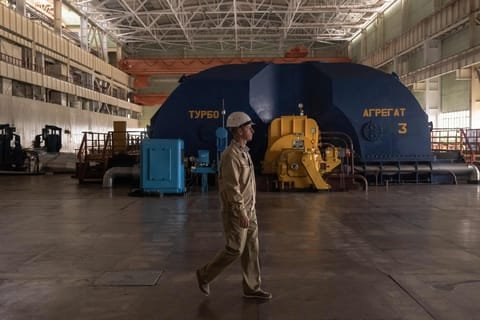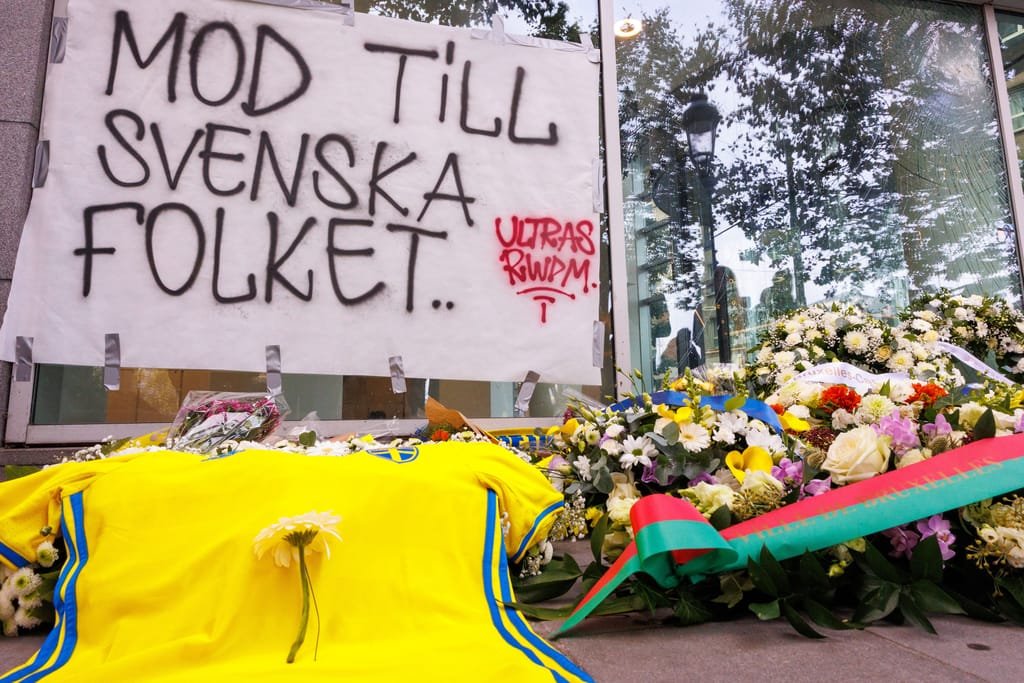Despite government orders to build defenses, experts and some lawmakers say Kyiv’s state-owned atomic firm did little for months, sparking fears of winter blackouts.
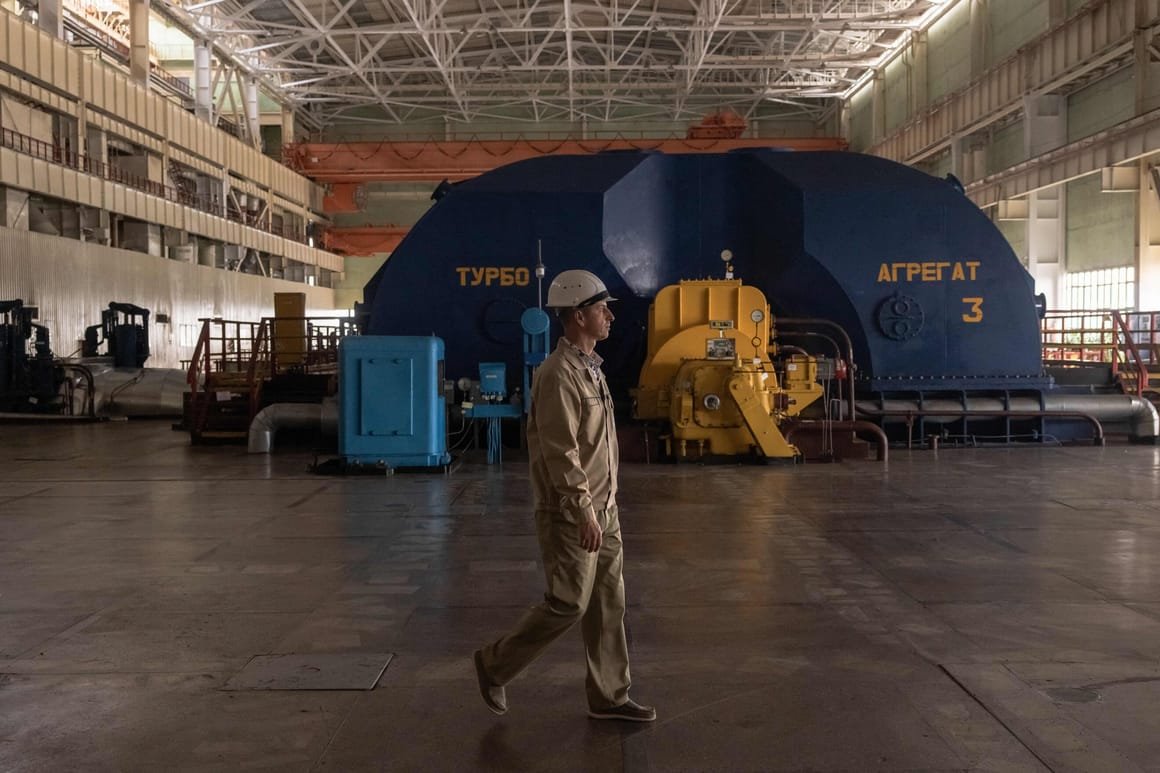
Finger-pointing has erupted in Ukraine over how nuclear facilities were left exposed to Russian bombardment this winter, putting the country on the cusp of a devastating blackout.
Under the spotlight are Ukraine’s state-owned atomic energy firm Energoatom and Energy Minister German Galushchenko, who stand accused of failing to ensure that the nuclear sector was adequately prepared for Russian attacks during the freezing temperatures that now blanket Ukraine.
Experts and numerous Ukrainian lawmakers say the firm did little to protect its nuclear facilities for months despite explicit orders from Ukraine’s government and policy changes that freed up cash. Galushchenko, they add, failed to pressure the company.
Instead, Energoatom pushed to expand a new nuclear plant that many lawmakers argue does nothing to keep the lights on in the short term.
The issue is a vital one in Ukraine. Nuclear facilities currently provide the bulk of the country’s electricity after months of Russian bombing devastated much of its energy system.
The situation has left Ukraine perilously close to a catastrophic outage during the depths of winter. Already in November the country had to cut output at one of its nuclear plants due to large-scale missile attacks. Kyiv’s intelligence services have warned for months that Russia is likely to order fresh strikes targeting critical nuclear infrastructure.
The delay in protecting atomic plants is “hardly explainable,” said Anastasiya Radina, a lawmaker from President Volodymyr Zelenskyy’s Servant of the People party, who chairs Ukraine’s parliamentary anti-corruption committee. Meanwhile, the nuclear expansion project is “ridiculous,” she added.
Radina said she would back a parliamentary inquiry into the delay. “It’s a legitimate question to ask,” Radina said. “What were you doing this whole time?”
Galushchenko vehemently denied that Energoatom had failed to build sufficient protections.
“What is needed” to shield key infrastructure “is protected,” he told POLITICO. “Everyone who said that nothing is protected in the nuclear fleet — that is a lie.”
Energoatom did not respond to multiple requests for comment.
Overconfident, underprepared
Ukraine is facing its toughest winter since Russia’s all-out invasion almost three years ago.
Waves of Russian air attacks have decimated many of the country’s coal plants, while its largest nuclear plant, Zaporizhzhia, is under occupation. That has left Kyiv heavily reliant on its three remaining nuclear facilities — Khmelnytskyi, Rivne and Pivdennoukrainsk — which collectively now provide 60 percent of Ukraine’s electricity.
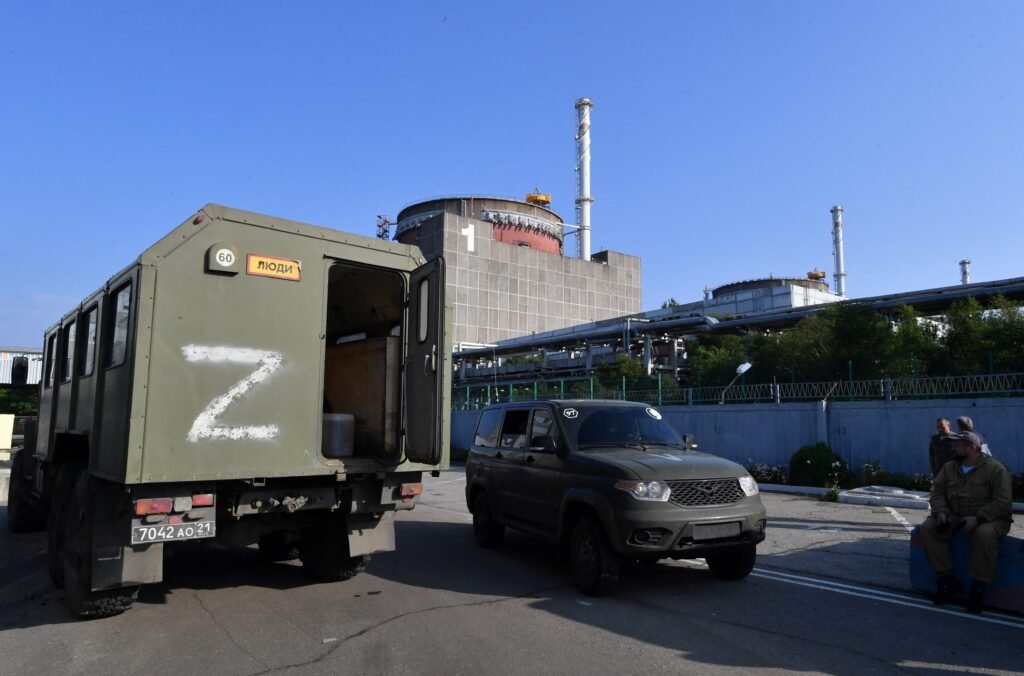
Experts say it would be relatively easy to force those plants to shut down if Moscow targeted infrastructure near the reactors, such as so-called open distribution devices and switchgears — which control equipment and regulate electricity flows between the power station and the grid.
Such strikes could cause sweeping blackouts of up to 20 hours until the infrastructure is repaired.
For months, however, Energoatom did little to address those concerns, they argue.
Even though Russian air attacks forced temporary reactor shutdowns as far back as the fall of 2022, the company said in its 2023 financial report that its construction priorities included two new power units at a hydropower plant and repairing a train track. The core assumption behind those plans, it argued, was that “military actions … will not cause physical damage” to nuclear plants.
According to Yuri Nikolov, an investigative journalist and anti-corruption campaigner who closely follows Ukrainian state-owned businesses, that shows “Energoatom simply did not want to engage in the complex construction of [proper] protection because it hoped that [Russian President Vladimir] Putin would not shoot at equipment near nuclear power plants.”
Last March, however, Ukraine’s government ordered all state-owned energy firms to start building protection around their critical infrastructure. While the instructions remain partly classified, the process would typically involve sandbags and metal cages to shield equipment from air attack debris, along with sturdier concrete shells to prove insulation from missile strikes.
That’s the process other firms like grid operator Ukrenergo had long been following.
But Energoatom waited until late September — six months later — to issue its first procurement contracts for more robust protective equipment, said Oleksandr Kharchenko, head of the Energy Industry Research Center think tank. Those included concrete structures, likely designed to encase open distribution systems near reactors.
There was “no reason” for that delay, he said. Now, with the work expected to be complete later this year, the plants “have no defense” this winter, he added.
Galushchenko told POLITICO that the state-owned nuclear firm had ordered protection outside the public contract system and that the September contracts concerned “additional construction” beyond what was required. He also said he had convinced the U.N. atomic watchdog, the International Atomic Energy Agency, to send regular patrols to survey nuclear infrastructure.
Ukraine’s government also nearly doubled electricity tariffs last June to help fund repairs to critical infrastructure, while easing obligations on Energoatom to subsidize household bills, said Andriy Zhupanyn, a lawmaker from Ukraine’s ruling party and deputy chair of the parliament’s energy committee. That move could result in up to €900 million in savings for Energoatom, he said, allowing the company to turn a profit for 2024.
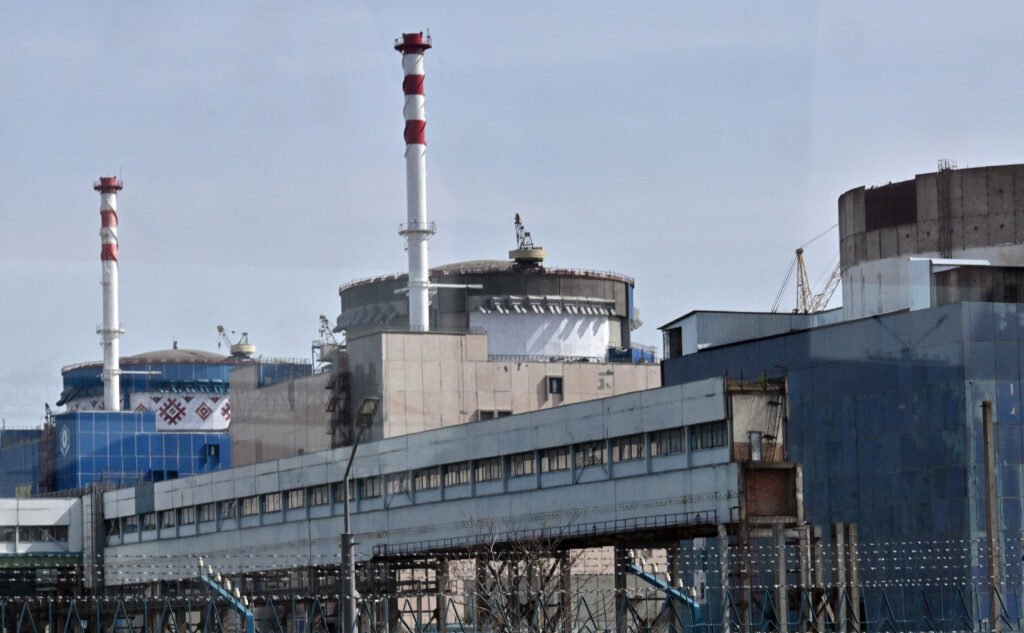
Meanwhile, the company has pushed to expand the Khmelnytskyi nuclear power plant in western Ukraine.
Building more reactors there would likely cost “more than €10 billion” and take “over eight years” to complete if greenlit, said Kharchenko, the analyst. It’s “not a viable” project in wartime, he added.
The Kyiv parliament appears to agree, with a bill approving the expansion still languishing after months of discussion. Lawmakers on the energy committee finally passed a partial version of the bill last week — though the overall expansion project still faces an uphill battle to win MP votes.
Atomic ally
The exposed reactors are also drawing increased scrutiny of Ukraine’s energy minister, German Galushchenko.
Officially the minister has little control over decisions by the state-owned firm, whose shares are owned by Ukraine’s economy ministry.
But given that Galushchenko served as vice president at the firm before he became a minister, “it’s no secret at all to anyone who works in the energy industry what is the nature of their relationship today,” said Kharchenko, the analyst.
“Energoatom will never do something without the minister’s approval,” he said. “He is absolutely … part of the Energoatom team.”
Galushchenko denied he has unofficial ties to the company, adding that such claims are part of a targeted campaign “paid by oligarchs” to oust him.
While Energoatom made no public move to protect its infrastructure for months, Galushchenko poured cold water on the idea that Ukraine’s nuclear infrastructure could be vulnerable to attack.
At a private meeting with energy experts last August, the minister acknowledged that Energoatom had not built protective structures around its switchgears.
But “the Russians will not shell them,” he said, according to a person present in the room, who was granted anonymity to speak candidly about the closed-door discussion.
Galushchenko said the experts had “got him wrong,” but acknowledged that the risk to Ukraine’s nuclear infrastructure became more apparent after Russia began targeting substations later that same month.

Then, in September, Ukraine went public with intelligence showing Moscow was readying an attack on its reactors.
Within hours of that warning, Galushchenko had dispatched a letter to the EU’s former energy chief, Kadri Simson, pleading for Brussels to support Ukraine in defending its nuclear plants.
“Disruption of normal operating conditions poses a real and serious harm to the life and health of the civilian population of Ukraine,” he said in the missive sent on Sept. 21 and seen by POLITICO. “Let me remind [you] that this threat is not new in the arsenal of Russian terror.”
The following week, Zelenskyy gave a speech at the U.N. General Assembly in New York, confirming the intelligence reports.“Any missile or drone strike, any critical incident in the energy system could lead to a nuclear disaster,” he said.
For Galushchenko, a serious incident could push him out of a job.
Some opposition lawmakers have already seen enough, launching a procedure to remove Galushchenko over “systemic corruption in the energy sector” and “failure to protect parts of the energy infrastructure” earlier this month. While the drive is unlikely to garner enough support to succeed, lawmakers from Galushchenko’s own ruling party aren’t exactly rushing to his defense.
It’s “logical” that Galushchenko and Energoatom CEO Petro Kotin should resign if Moscow’s air attacks force any nuclear reactor offline due to the failure to build concrete protection around equipment like switchgears, said Zhupanyn, the energy committee’s deputy chair.
“If you cannot perform the task of the government [or] as a CEO of a company,” he stressed, “shareholders should come in and dismiss you.”



